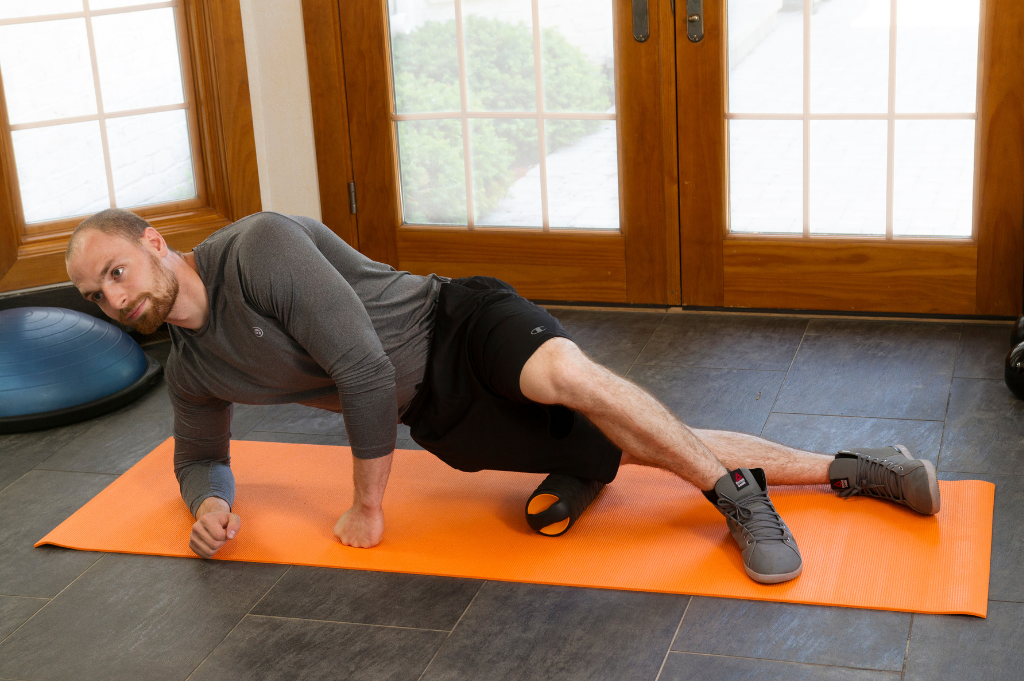If you have ever dealt with iliotibial band syndrome, you know how truly debilitating this condition can be. Don’t let it get you down. We’ve got the tips you need to alleviate and prevent IT band syndrome such as rolling your outer thigh muscle with a massage roller at home.
What is Iliotibial Band Syndrome?
Iliotibial band syndrome is an injury that comes from strain and overuse. Pain is felt when the IT band (the connective tissues that run along your outer thigh between your pelvis and tibia) becomes taut enough to rub against your thigh bone. Ouch.
What Causes IT Band Syndrome?
IT band syndrome can occur for a number of reasons.
1. Overuse
Training too hard can cause your IT band to become inflamed and tight enough to rub against the bone — especially if you’re not giving yourself enough time to stretch every muscle properly. If you believe overuse is the cause of your IT band syndrome, cut back your training hours and spend some quality time with a massage roller. If you continue at a rate your body can’t handle, you’re going to cause permanent damage.
2. Improper Form
IT band syndrome is not uncommon in athletes who put a lot of strain on their knees and legs, such as bicyclists, runners, and weightlifters. If your favorite exercise activity isolates the muscles in your legs, you must work out with an exceptional form to avoid this condition. Improper technique can do a lot more damage to your body than simply tightening your IT band. If you’re not training too hard, it may be time to get some help perfecting your form.
3. Uneven Ground
Another major cause of this painful condition is the frequent exercise on uneven ground. Long distance runners experience IT band syndrome more than other athletes because they train and perform on the ground that isn’t always even. Running or walking along a slight incline will increase pressure and strain to the downhill leg. Repetitive exercise along uneven terrain is jarring to the muscles, joints, and bones. Listen to your body as you train. Pay close attention to how it reacts along certain trails or during specific exercises.
How to Stretch the Outer Thigh
You can prevent debilitating outer thigh pain by making a few necessary adjustments to your exercise regime. But to relieve your pain, all you need to do is stretch the outer thigh muscle with a foam roller.
Stretching the outer thigh is fairly simple. We’ve broken it down for you in the following steps:
- Lay on your right side with your foam roller directly beneath your hip bone.
- Prop yourself up with your elbow. Cross your left leg in front of you and place your foot on the ground for balance.
- Carefully roll along your foam roller until it is positioned just above your knee before rolling back to the starting position.
- Pause and apply more pressure in particularly tight and tender areas.
- Repeat steps 1-4 on your left side.
By making small changes to your exercise routine and using a foam roller to regularly stretch your iliotibial band that runs along the outside of your thigh, you’ll be able to relieve your outer thigh pain, prevent IT band syndrome, and train efficiently.

